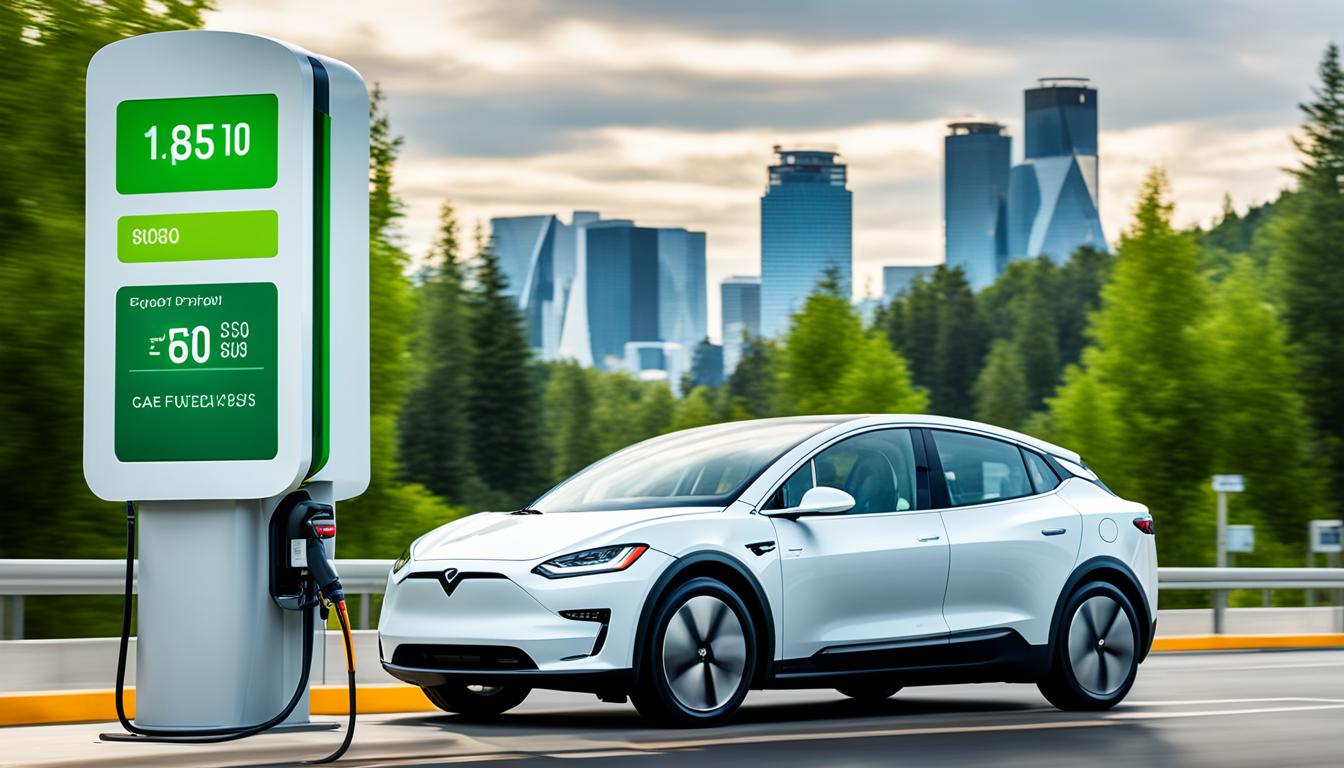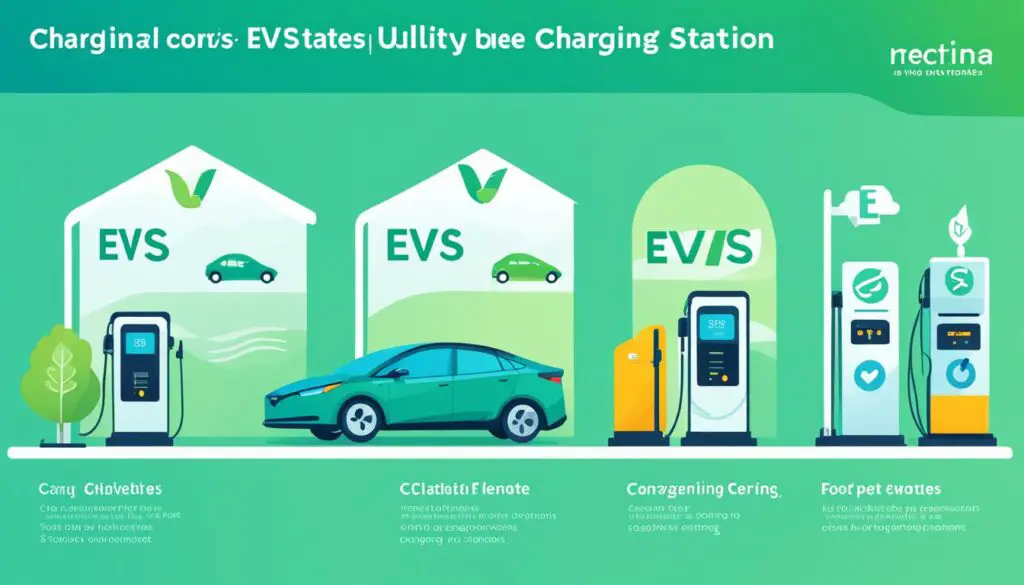
Unlocking Savings: Everything You Need to Know About Electric Vehicle Subsidies
Electric vehicle subsidies can be a great way to cut costs on your eco-friendly purchase in the United States. These subsidies are financial incentives provided by the government or other organizations to encourage the adoption of electric vehicles. By taking advantage of these subsidies, consumers can save money and contribute to a cleaner environment.
Whether you’re considering buying an electric vehicle for the first time or looking for ways to reduce the expenses associated with owning one, understanding the different types of subsidies available is essential. In this article, I will provide an overview of electric vehicle subsidies in the United States, including federal tax credits, state rebates, and utility incentives. By harnessing these cost-saving measures, you can make your eco-friendly purchase even more affordable.
To start off, let’s explore the federal tax credits available for electric vehicles.
Key Takeaways:
- Electric vehicle subsidies can help reduce the cost of purchasing and owning an electric vehicle in the United States.
- Subsidies are provided by the government or other organizations to incentivize the adoption of electric vehicles.
- The federal tax credit is a significant subsidy that can provide a substantial reduction in the cost of an electric vehicle.
- Many states offer their own incentives and subsidies, such as cash rebates and purchase incentives.
- Utility incentives, such as special electric vehicle charging rates, can further contribute to cost savings.
Federal Tax Credits for Electric Vehicles
One of the most significant electric vehicle subsidies available in the United States is the federal tax credit. This tax credit offers a substantial reduction in the cost of purchasing an electric vehicle, making it an attractive incentive for potential buyers.
The amount of the tax credit is based on two factors: the capacity of the vehicle’s battery and the manufacturer’s sales volume. Generally, vehicles with larger battery capacities and purchases from manufacturers with higher sales volumes can qualify for a higher tax credit. Currently, the maximum tax credit for qualifying electric vehicles is $7,500.
By taking advantage of federal tax credits, individuals can save a significant amount of money when purchasing an electric vehicle. These credits not only help offset the higher upfront cost of electric vehicles but also encourage the widespread adoption of more environmentally friendly transportation options.
To illustrate the potential savings, here is a table showcasing the maximum federal tax credits available for electric vehicles based on battery capacity:
| Battery Capacity | Maximum Tax Credit |
|---|---|
| Less than 5 kWh | $2,500 |
| Between 5 kWh and 16 kWh | $5,000 |
| Greater than 16 kWh | $7,500 |

As seen in the table, electric vehicles with larger battery capacities can qualify for the maximum tax credit of $7,500. This substantial reduction in the cost of purchasing an electric vehicle can make them much more affordable and appealing to potential buyers.
When considering the purchase of an electric vehicle, it is crucial to research and understand the specific requirements and eligibility criteria for federal tax credits. By taking advantage of these subsidies, individuals can enjoy both the financial benefits and the positive environmental impact of electric vehicles in the United States.
State Rebates and Utility Incentives
When it comes to embracing electric vehicles (EVs), the benefits extend beyond federal tax credits. Many states offer their own incentives and subsidies, ranging from cash rebates to special electric vehicle charging rates. These additional perks can further reduce the cost of purchasing and owning an EV, making it an even more attractive option for eco-conscious individuals. Let’s explore some of the state rebates and utility incentives available across the United States.
State Rebates
States across the country recognize the importance of transitioning to electric vehicles to reduce carbon emissions and improve air quality. As a result, they have implemented rebate programs to provide financial support to EV owners. These state rebates vary in amount and eligibility criteria. Some states offer a flat rebate for EV purchases, while others consider factors such as income level or battery capacity. These rebates can range from a few hundred dollars to several thousand, making a significant impact on the overall cost of an electric vehicle.
Utility Incentives
In addition to state rebates, many utility companies provide incentives to encourage the adoption of electric vehicles. These incentives can include discounted charging rates, special EV charging infrastructure development programs, and even free or reduced-cost home charging equipment. By partnering with utility companies, EV owners can take advantage of lower electricity rates and convenient charging solutions, further maximizing their savings.
“State rebates and utility incentives can significantly lower the upfront and ongoing costs of owning an electric vehicle, making them a more affordable and sustainable option for consumers.”
To illustrate the varying state rebates and utility incentives available, here is a table showcasing a few examples:
| State | Rebate Amount | Utility Incentives |
|---|---|---|
| California | $2,000-$7,000, depending on income level and battery capacity | Discounted charging rates, home charging equipment incentives |
| New York | $2,000-$2,500, based on battery capacity | Rebate on charging station installation |
| Texas | $2,500, subject to income and vehicle price limitations | Smart charging pilot programs |
These examples emphasize the range of incentives available and demonstrate the state-specific nature of these programs.
By combining federal tax credits, state rebates, and utility incentives, electric vehicle owners can reap substantial financial savings and contribute to a greener future. These incentives not only make electric vehicles more accessible but also incentivize the continued growth of charging infrastructure and the adoption of sustainable transportation methods.

Conclusion
Electric vehicle subsidies play a crucial role in making the purchase and ownership of electric vehicles more affordable in the United States. By taking advantage of these subsidies, consumers can significantly reduce their costs and contribute to a cleaner and more sustainable environment.
Through federal tax credits, state rebates, and utility incentives, individuals can unlock substantial savings on their electric vehicle purchases. The federal tax credit, which can reach up to $7,500 for qualifying vehicles, offers a considerable reduction in the overall cost. Additionally, various states offer their own incentives, such as cash rebates, purchase incentives, and special charging rates, further enhancing the potential cost savings.
These electric vehicle subsidies are specifically designed to encourage the adoption of electric vehicles and accelerate the transition to a greener transportation system. By understanding and utilizing these subsidies, consumers can not only save money but also contribute to the reduction of greenhouse gas emissions and improve air quality.
Investing in electric vehicles not only benefits individuals’ wallets but also supports the United States’ commitment to combating climate change. The cost savings provided by these subsidies make electric vehicles a viable and eco-friendly option for more people across the country. So, if you’re considering an electric vehicle, explore the available subsidies and reap the benefits of both cost savings and a lighter carbon footprint.
FAQ
What are electric vehicle subsidies?
Electric vehicle subsidies are financial incentives provided by the government or other organizations to encourage the adoption of electric vehicles. These subsidies can help cut costs on your eco-friendly purchase in the United States.
How do federal tax credits work for electric vehicles?
Federal tax credits for electric vehicles can significantly reduce the cost of purchasing an electric vehicle. The amount of the tax credit depends on the capacity of the vehicle’s battery and the manufacturer’s sales volume. Currently, the maximum tax credit is $7,500 for qualifying electric vehicles.
What other incentives are available for electric vehicles?
In addition to federal tax credits, many states offer their own incentives and subsidies for electric vehicles. These can include cash rebates, purchase incentives, and special electric vehicle charging rates. The amount of these state rebates and incentives can vary depending on the state and the specific program.
How can electric vehicle subsidies reduce the cost of owning an electric vehicle?
Electric vehicle subsidies, such as federal tax credits and state rebates, can significantly reduce the cost of purchasing and owning an electric vehicle in the United States. By taking advantage of these subsidies, consumers can unlock savings and make their eco-friendly purchase more affordable.
